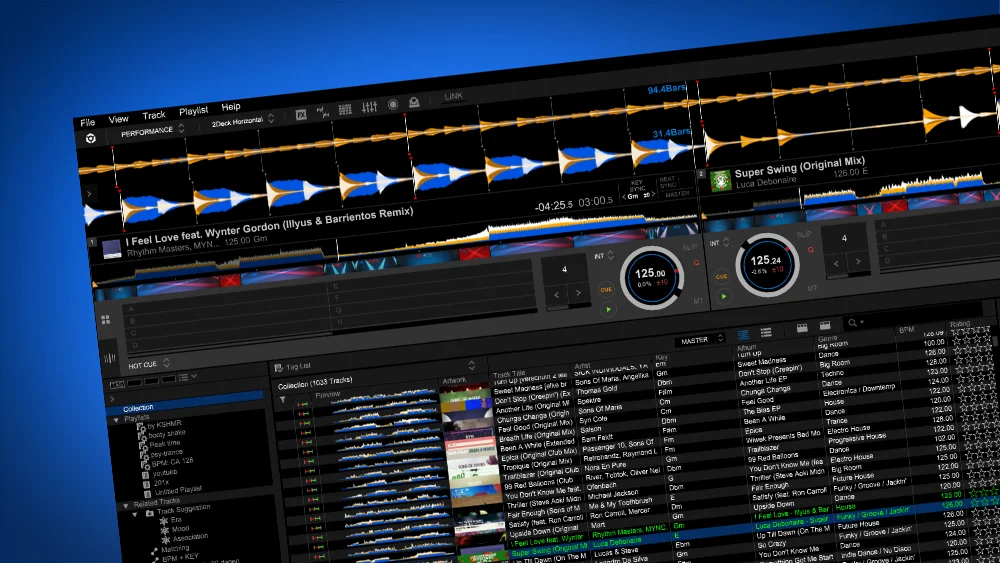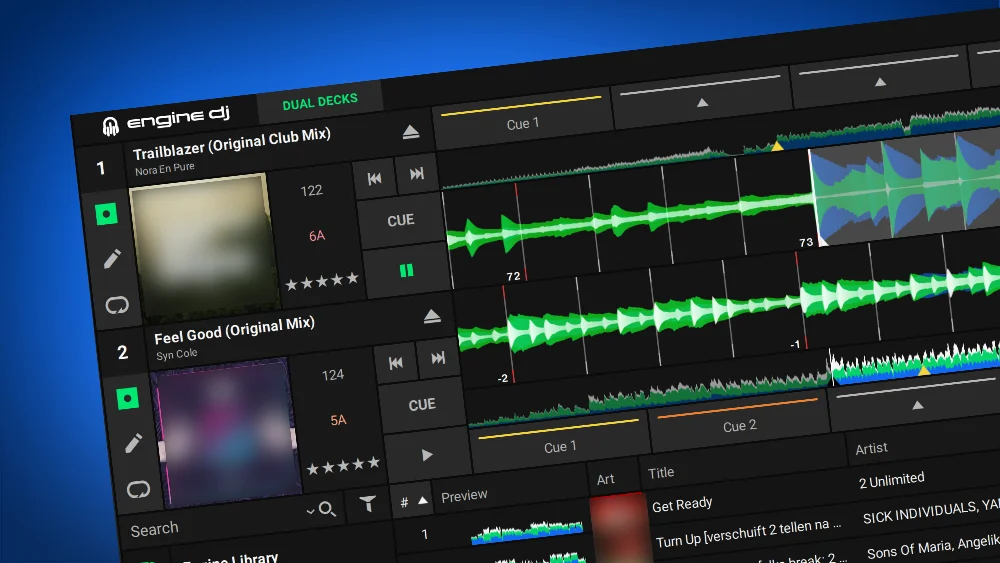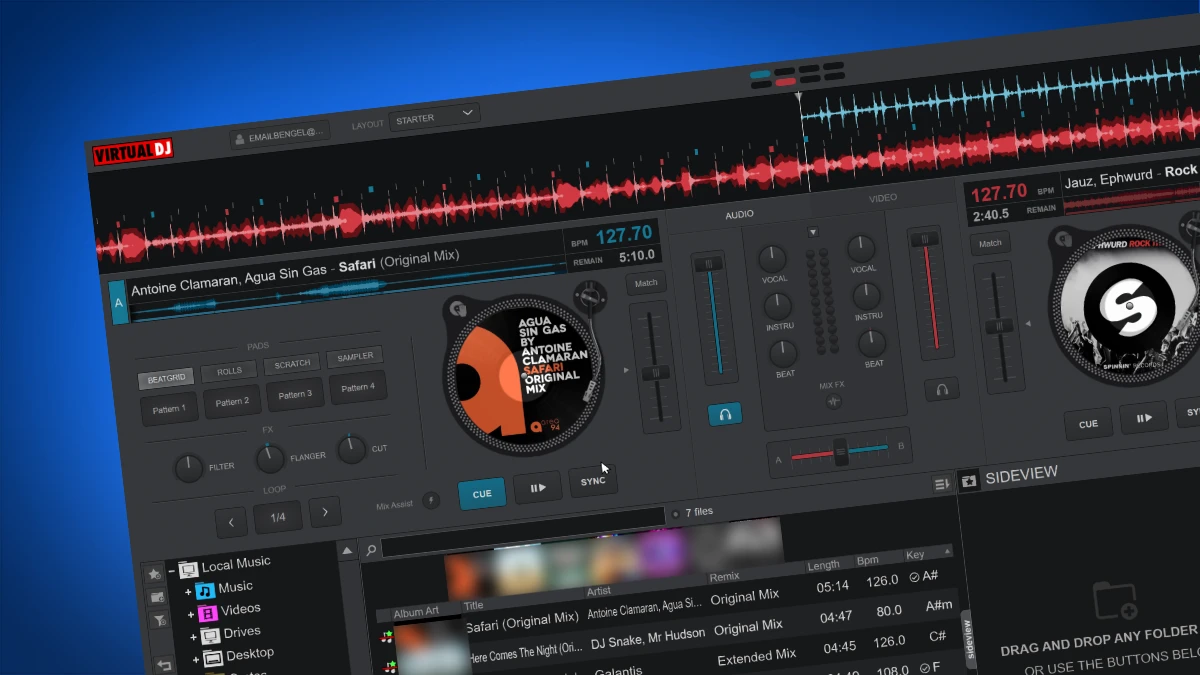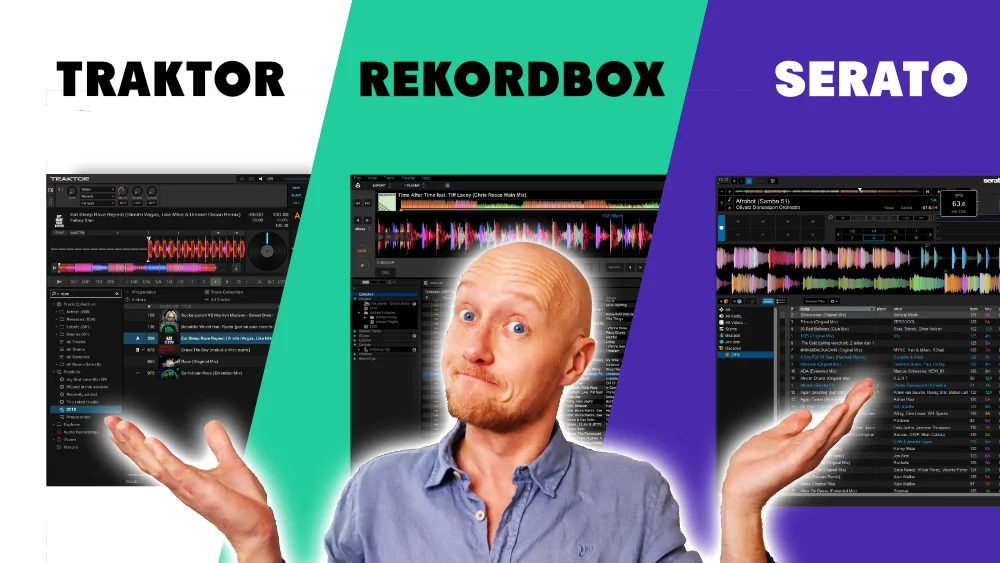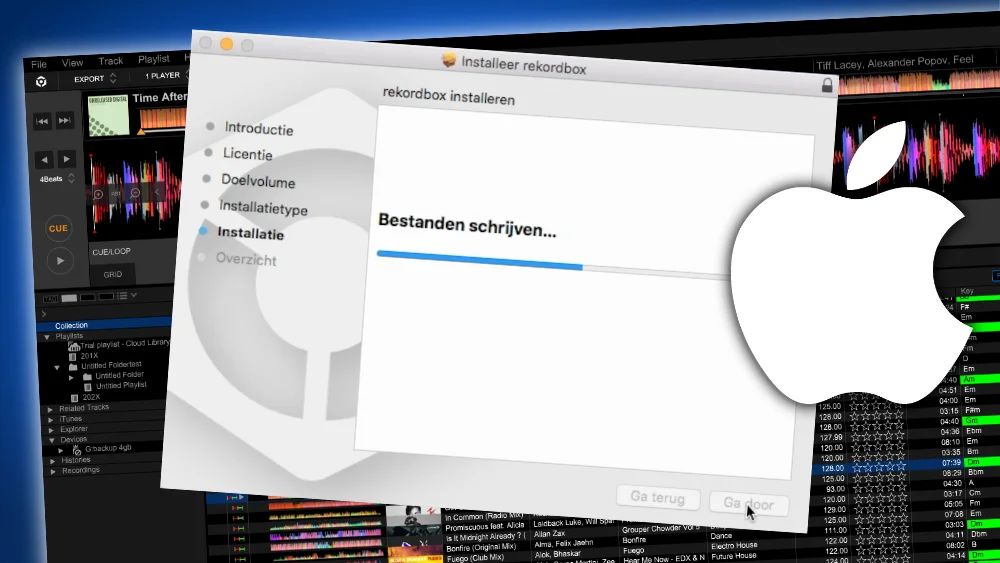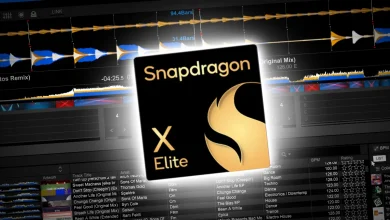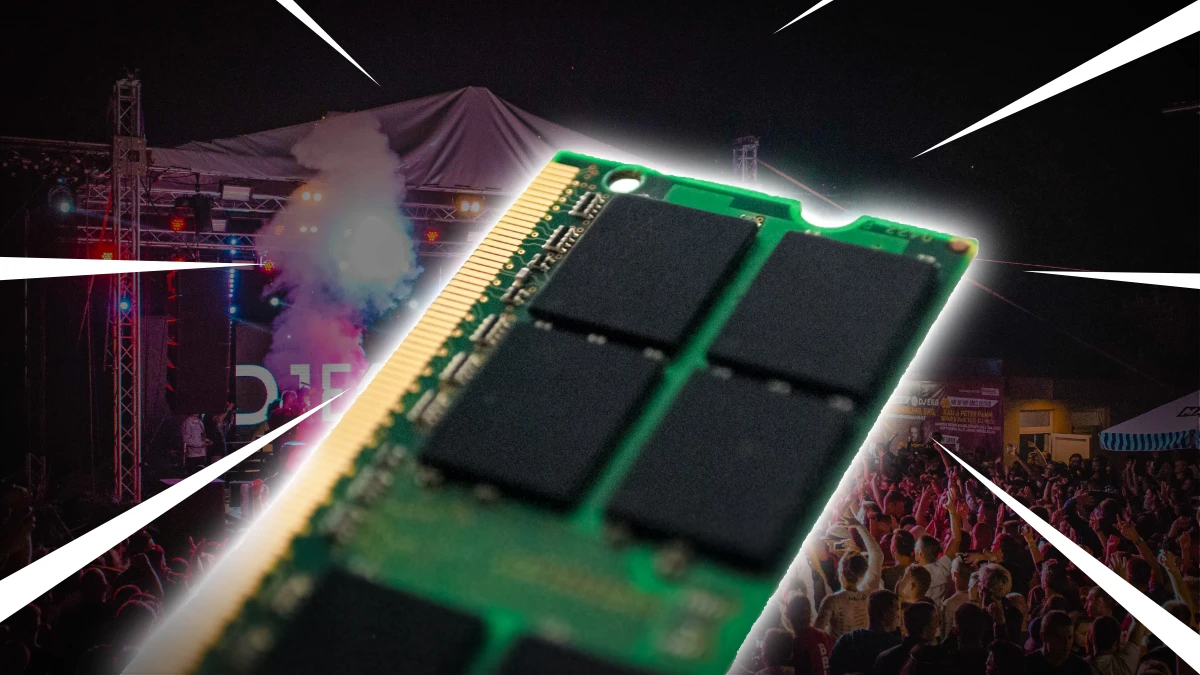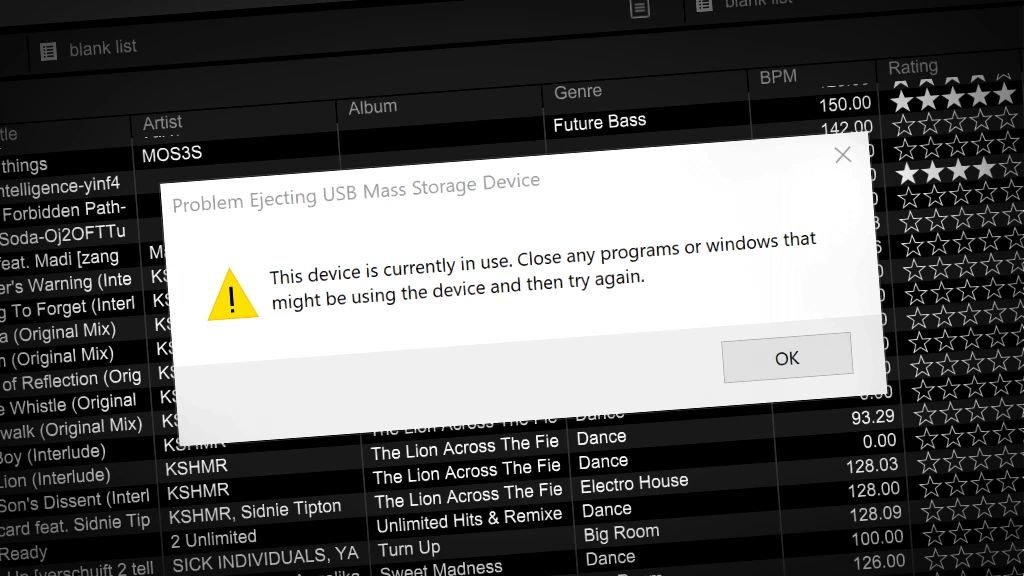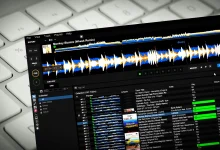Buying guide: DJ software – I installed & tested every software
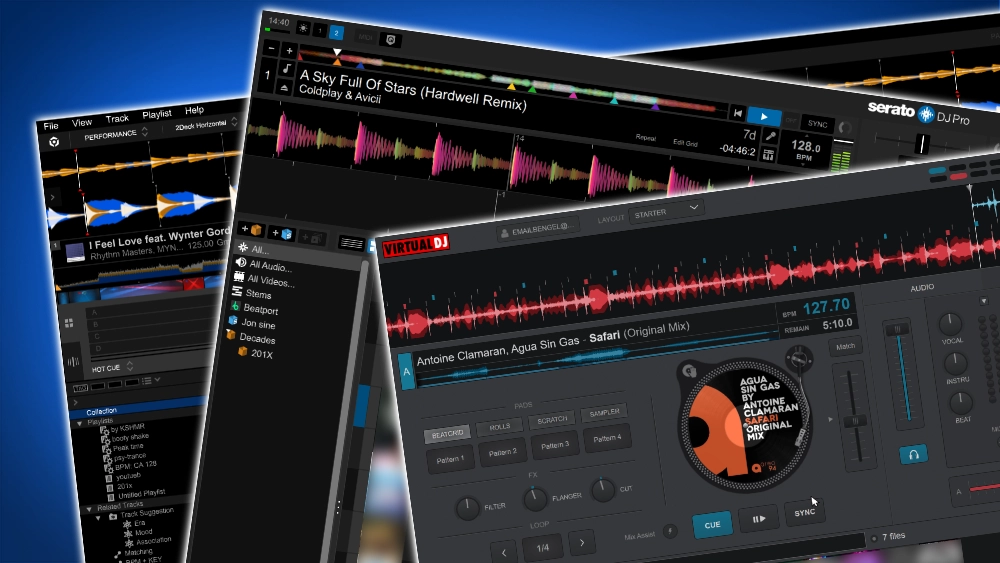
Table of Contents
- DJ & music production
- Performance or management software
- User Interface
- Hardware support
- Cloud storage
- Streaming
- Stems
- Tempo Sync / Key Sync
- EQ mixing
- Smart playlists
- Tag list
- Phrase detection
- Harmonic mixing
- Effects
- Pricing
- Next steps
DJ & music production
There is a big difference between
- DJ software and
- live-performance-software and music production software.
DJ software is meant to mix 2 existing tracks together.
Examples are: Rekordbox, Serato, Virtual DJ, Traktor etc.
Music-production-software and live-performance-software is meant to create tracks from scratch.
Examples: Ableton Live, Apple Mainstage etc.
In this article I’m focusing on regular standard DJ software, not live performance software.
If you are confused about the difference, check out my article about: the difference between DJ and music production software.
Performance or management software
There are DJ programs that allow you to:
- play a gig
- manage your library / export to USB
- both
Serato, Virtual DJ and Traktor only allow you to play a gig.
Rekordbox allows you to do both (for free).
Engine DJ manages your library and exports to USB.
User Interface
Personally I like user interfaces which are clean and uncluttered.
I prefer big buttons, because clubs are damp places with sticky mouse surfaces.
Also navigating with a track pad is always a bit clunky and tricky with wet fingers (from a glass).
I would advice look at some of my reviews of DJ software, download demo versions, click around and see which one you prefer.
Free DJ tips in your inbox?
As a bonus gift I will send you a FREE E-book on how to kick-off your DJ career!
Hardware support
Personally I would always recommend to use a DJ controller with your DJ software.
Because it is much faster and much more convenient.
Some software like Traktor supports just a few DJ controllers.
While Virtual DJ supports almost every controller on the planet.
Check if your controller is on the list of supported hardware for your DJ software.
Cloud storage
A lot of DJs (not me personally) place a huge emphasis on support for cloud storage in DJ software.
For example: Dropbox, One Drive, Google Drive.
With cloud storage you can upload your files to the cloud and wherever you are you can access them.
This sounds nice, but you are always reliant on a working internet connection.
This can be spotty in crowded places (let say: a club or a festival).
Only some software supports it.
In the feature comparison in my best DJ software article you can find which ones.
Streaming
An almost endless stream of music, more than you can ever carry on a USB drive.
It sounds too good to be true.
It is!
Regretfully the most popular music service Spotify doesn’t allow music to be played in public (and by extension unusable for DJs).
There are alternatives: Tidal, Beatsource, Soundcloud, Deezer and iDJ.
Some DJ software supports these.
They don’t have such an extensive library as Spotify however.
Personally, I think dj streaming is stupid.
In the feature comparison in my best DJ software article you can find which software supports which service.
Stems
Stems are parts of tracks (like kick, bass, melody or vocal) which can be played together to get the full song.
They can also be separated to make mixing more seemless.
(Read explanation of stems)
There are 2 types of stem-methods that are supported by software:
1. playing stem tracks (some files support stems)
Some files (*.M4A for example) support multiple audio streams in 1 file.
2. generating stem tracks
The software extracts stems from existing tracks
Playing stem tracks works 100x better than generating stem tracks.
Because the producer encoded each stem into a different track in the file.
When software tries to detect stems in existing file, you risk the chance of one track “bleeding” into the other.
Often vocals bleed into instrumentals (and vice versa), because the frequencies are very close.
This results in the vocal suddenly coming through when only the instrumental is played.
The crowd thinks you made a mistake.
Also the sound quality of generated stems are often really bad.
And the crowd thinks you are playing bad quality music.
When you want high quality mixing with stems, go for the software that supports playing stem tracks.
In my best DJ software article you can find which software supports which stem feature.
Tempo Sync / Key Sync
With tempo sync you match the tempo of the new track with the old.
The logical problem is that the pitch of the new track also changes because of the speed change.
This is where Key Sync comes in.
This matches also the key of the second track with the first.
Most software supports tempo sync, but not every software supports key sync.
When the key or tempo has too much “distance” it will degrade the audio quality considerable.
So, use with caution.
Free DJ tips in your inbox?
As a bonus gift I will send you a FREE E-book on how to kick-off your DJ career!
EQ mixing
EQ mixing is one of the key skills a DJ must have to mix seemlessly.
By cutting out/adding the low, mid and high frequencies you can mix like a pro.
However, not every software supports EQ mixing!
Or only supports EQ mixing for an extra fee.
To me this is unacceptable for me.
That you pay extra for fancy effects (that you’ll never use in the real world), no problem, but not EQ mixing.
It is so basic.
Most software does however support EQ mixing with a controller.
Check what your software supports.
Smart playlists
Most software (but not all) supports smart lists (or smart crates).
I don’t see smart lists as a necessity for a DJ.
But it is just a very handy feature that saves you a lot of time.
With smart lists you can define criteria on which a playlist is automatically generated.
For example: BPM or genre.
These automatically-generated playlists are repopulated when you add or remove tracks from your music library.
Tag list
Again, not a necessity, but it a nice feature to have.
With a tag list you tag tracks to play next in your gig.
It is basically a to-do list for the DJ.
Not every software supports it.
Phrase detection
Mixing tracks in phrase makes for the best mixes.
A phrase is basically a musical sentence.
It is nice to have phrase detection in your software, so you don’t have to do it by ear.
You can visually see it on screen.
Not much software supports this.
Harmonic mixing
With harmonic mixing you mix songs that are compatible in key.
It depends on your DJ software if they make it easy for the DJ or not.
The easiest way is Camelot Key or the Open Key notation.
But not every software supports Camelot or Open-key.
Free DJ tips in your inbox?
As a bonus gift I will send you a FREE E-book on how to kick-off your DJ career!
Effects
I personally almost never use effects.
It is like candy, when you eat too much, you get nauseous.
Using effects too often it’s just too much is just unprofessional
When a software has:
- Echo (or something similar)
- Reverb
- White noise
- High Pass Filter (HPF) / Low Pass Filter (LPF)
then you have covered everything you’ll ever need.
The rest is unnecessary bloat.
Pricing
I’m an adversary for perpetual licenses instead of subscriptions for 2 reasons
- A subscription is a tax on the stupid and the poor.
- It is almost impossible to cancel a subscription
Companies will use every trick in the book to make you stay.
The most effective “trick” is to take your data hostage (a cloud storage solution for example).
Or it is “conveniently” very hard to cancel your subscription … a help desk that doesn’t respond … you have to pay a fine … whatever.
A perpetual license will always pay itself back!
From the moment that this happens, the software is free!
Next steps
I would recommend to look at some reviews of DJ software
Then download 2 or 3 demo versions and see if you like it.
For a full feature comparison, you might want to check out my best DJ software article:


